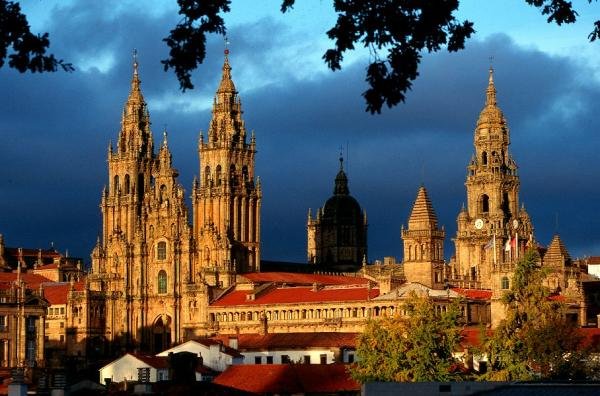Santiago de Compostela
Santiago de Compostela is one of the most beautiful cities in Spain. Its old streets with arcades, its old noble houses, built with magnificent stones, have, with the rain, that particular tone of silver and nostalgia that makes them unforgettable. But, in addition, its cathedral (erected in the Middle Ages, when the city became a center of pilgrimage as important as Rome or Jerusalem) is the fundamental work of architecture and Romanesque sculpture of the Castilian-Leonese area.
The Cathedral of Santiago presides over a magnificent square, together with the beautiful plateresque complex of the Hostal de los Reyes Católicos and the elegant eighteenth-century palace that is now the City Hall. Although the cathedral is a great Romanesque work, its exterior offers an impressive staircase and baroque facade started in 1667 by Domingo de Andrade and finished by Fernando Casas Novoa in 1750. Behind this façade, called the Obradoiro, is the Romanesque cathedral, begun at ends of the eleventh century and finished in the next, although its consecration dates from 1211. It has a Latin cross plan, with three ships of 100m in length, also three aisles, 65 m long, and ambulatory in the apse. The central naves are covered with a barrel vault; the lateral ones, with vault of edge. On these last runs the clerestory, a beautiful gallery with windows of two arches that give to the central ship. The lateral naves continue at the head of a large ambulatory with radial chapels.
